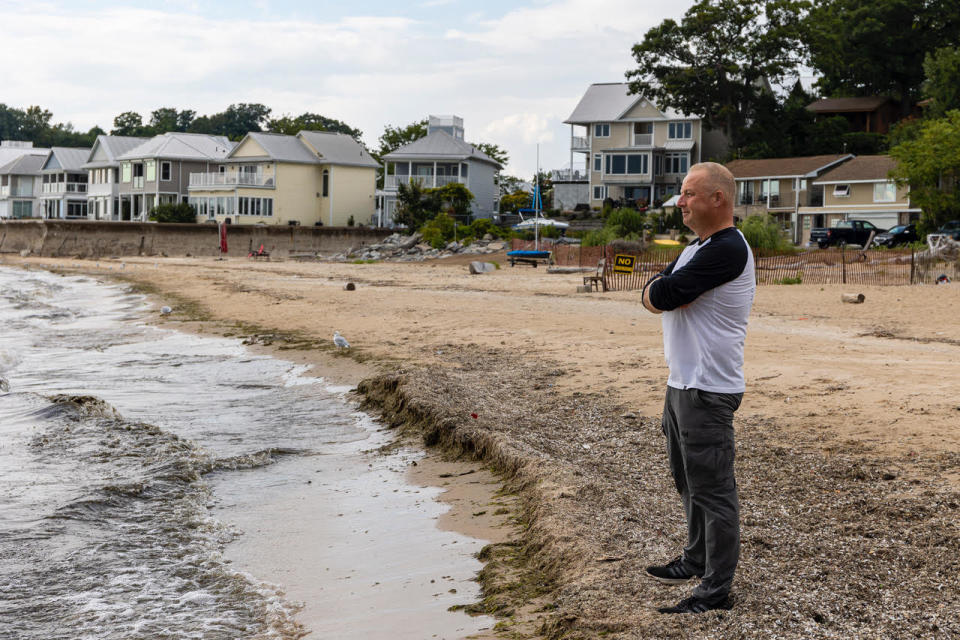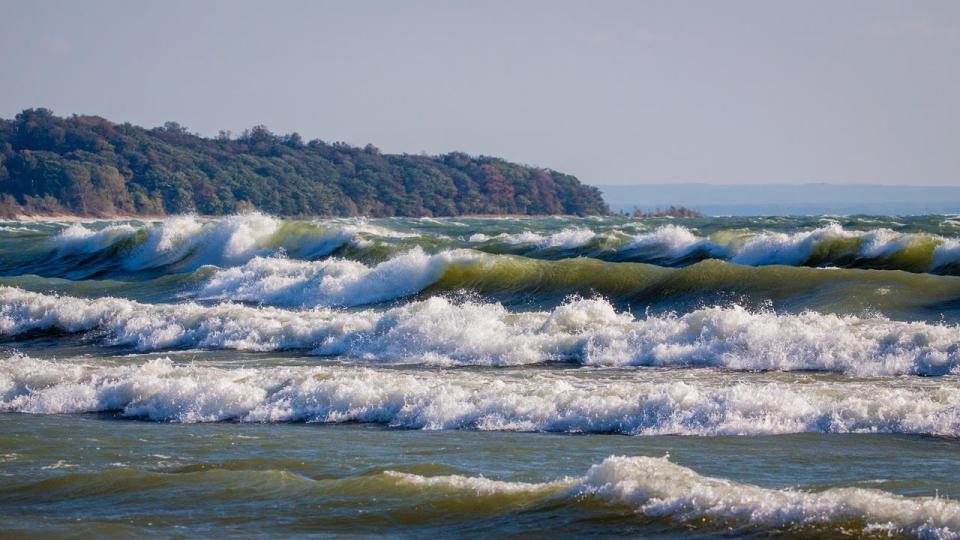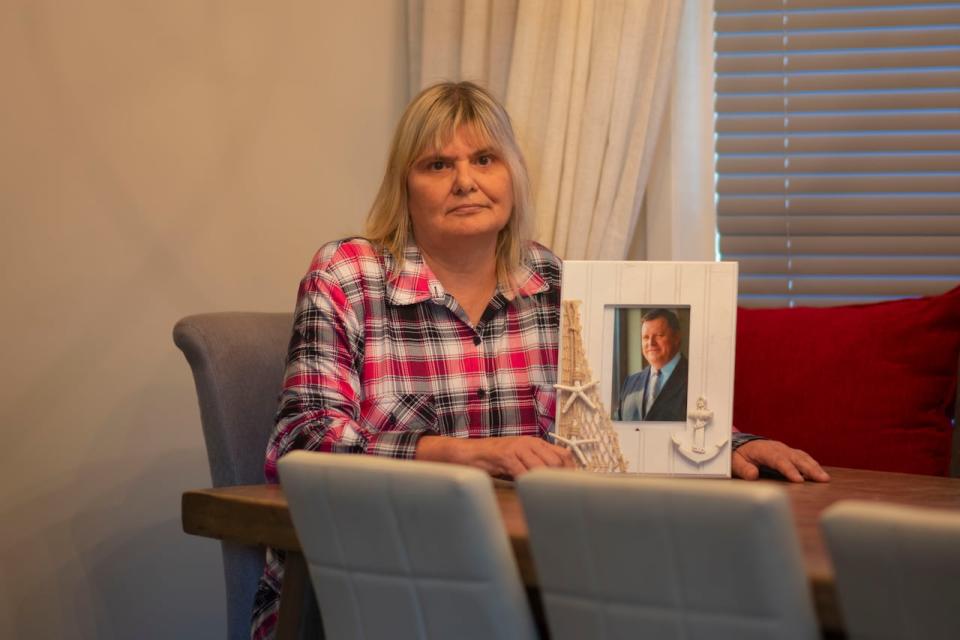
Mason-Levasseur’s husband, Patrick Keith, drowned at a beach on Lake Erie in 2016. Since then, she says she falls apart each time she hears about someone drowning or getting into difficulty in the water.
The St. Catharines resident said that’s exactly what happened to her when she read a CBC News article about a 50-year-old Milton man who drowned during a Labour Day swim at a beach in Port Colborne.
“It still triggers all the feelings of that day… you know, I guess you call it PTSD [post-traumatic stress disorder],” Mason-Levasseur told CBC Hamilton.
“I fall apart, I cry, and I think of the poor family and how they’re [doing], you know… Every time something like this happens, it brings it all back.”
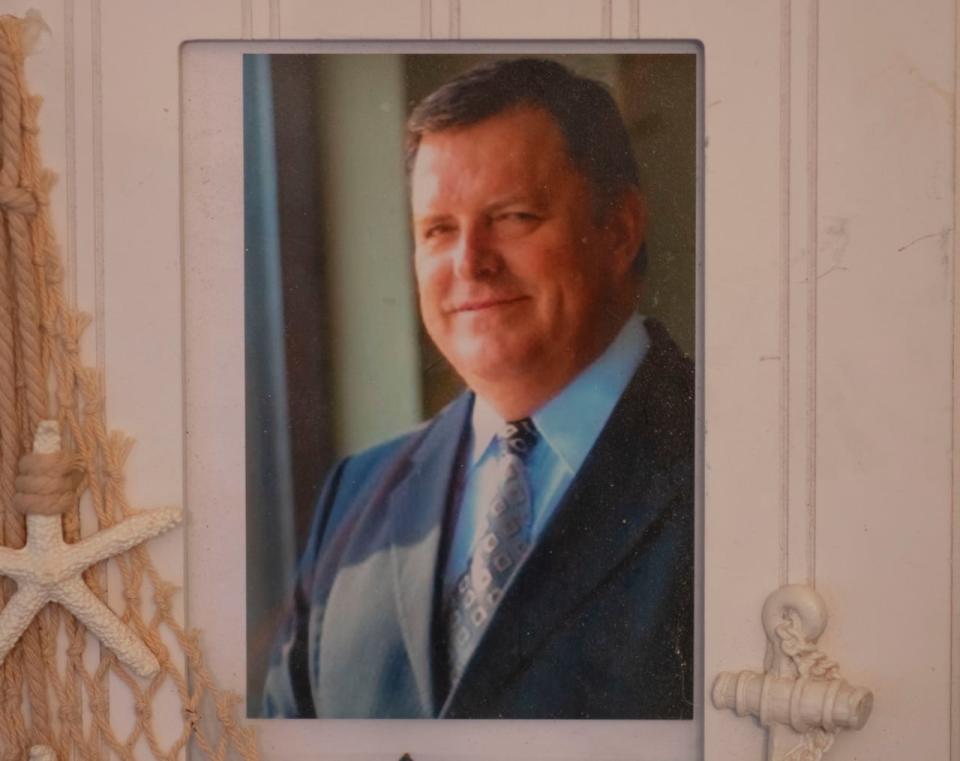
To prevent such tragedies, Mason-Levasseur said the owners of private beaches should be mandated to inform beachgoers when it’s not safe to enter the water due to high winds and rip current, conditions she said contributed to her husband’s death.
Keith, 61, drowned on July 22, 2016. The couple was then living in Crystal Beach, a community part of the Fort Erie municipality — home to around 30 kilometres of shoreline, most of it privately owned, according to Fort Erie Mayor Wayne Redekop.
At the time, Mason-Levasseur said their home was about 200 metres from where Keith drowned, on a patch of beach to the east of Crystal Beach Waterfront Park. The beach is privately owned but easily accessible to the public, Mason-Levasseur said.
That summer day, Mason-Levasseur wasn’t with Keith. She said witnesses told her they saw her husband standing in waist-high water when he appeared to go under. She said despite the windy conditions, there were no warning signs on the beach and a lifeguard was not present.
A year or so later, her family hired coastal a geomorphologist and University of Waterloo professor, Dr. Chris Houser, to try to figure out why Keith was unable to get out of the water.
According to Houser’s report, a copy of which was seen by CBC Hamilton, the weather conditions at the time of the Keith’s death were consistent with drownings of surfers in the Great Lakes between 2010 and 2017.
“Based on the waves and currents observed during the site visit [made by Houser on Sept. 21, 2018], when conditions were similar to the time of the accident on July 22, 2016, it is reasonable to expect that a dangerous current was present at the time of drowning,” Houser wrote in the report.
‘There’s more that private beaches and owners need to do’
According to Mason-Levasseur, there have been at least two other drownings in the Crystal Beach area since her husband’s death.
She questioned the safety measures at Sun Retreats Sherkston Shores in nearby Port Colborne, where the Milton man drowned this year on Labour Day, for instance, whether a gated entrance to the beach was open but should have been closed that day.
We’ve asked Marz Homes for signage and they’ve declined for seven years now. – Patricia Mason-Lavasseur
Mason-Levasseur said developer Marz Homes has a subdivision with access to the private beach where her husband died. She said there were no hazard signs or any warnings about dangerous conditions on that day in 2016. She’s been trying to get Marz Homes to install signs ever since, but said the company has refused.
“I just think that there’s more that private beaches and owners need to do to let people know that these conditions are possible, and not blaming victims,” Mason-Levasseur said.

Mason-Levasseur filed a lawsuit against Marz Homes in 2018, seeking $2 million for the wrongful death of her husband.
In the statement of claim, seen by CBC Hamilton, Mason-Levasseur alleges Keith’s death was caused by the negligence of the defendants, including the failure “to place signage at or near the premises.”
None of the claims have been tested in court. Mason-Levasseur’s lawyer, Joseph Fearon, told CBC Hamilton he expects the case to go to trial next year.
CBC News contacted both Marz Homes and Sun Retreats Sherkston Shores in Port Colborne for comment.
In an email, Marz Homes project Manager Dani Gabriele said, “Marz Homes does not and has never owned any beaches in Crystal Beach.”
The company lists two residential developments in Crystal Beach on its website, including one described as a “beachside community.”
When asked about the allegations in the lawsuit, Gabriele said, “Marz Homes has no further comment.”
‘This isn’t something to be taken lightly’: mayor
Redekop said the mix of private and public waterfront areas, including smaller informal access points via road allowances, means there is a variety of ways beaches are managed.
Bay Beach, a public area in Crystal Beach and “one of the nicest sand beaches in the country,” according to Redekop, has a live webcam feed so people and the municipality can monitor capacity. Redekop said all public access points have signage and the main public beaches have red and white poles to mark their boundaries.
“We try to make sure that people understand what the rules are, and that they’re aware of the fact that, you know, this is water. This isn’t something to be taken lightly.”
But with many visitors coming from outside the region in the summer, Redekop said people may not know what the poles indicate or they may ignore signs.
When it comes to private spaces, “if you’re a property owner, you should make sure that your property was safe,” Redekop added.
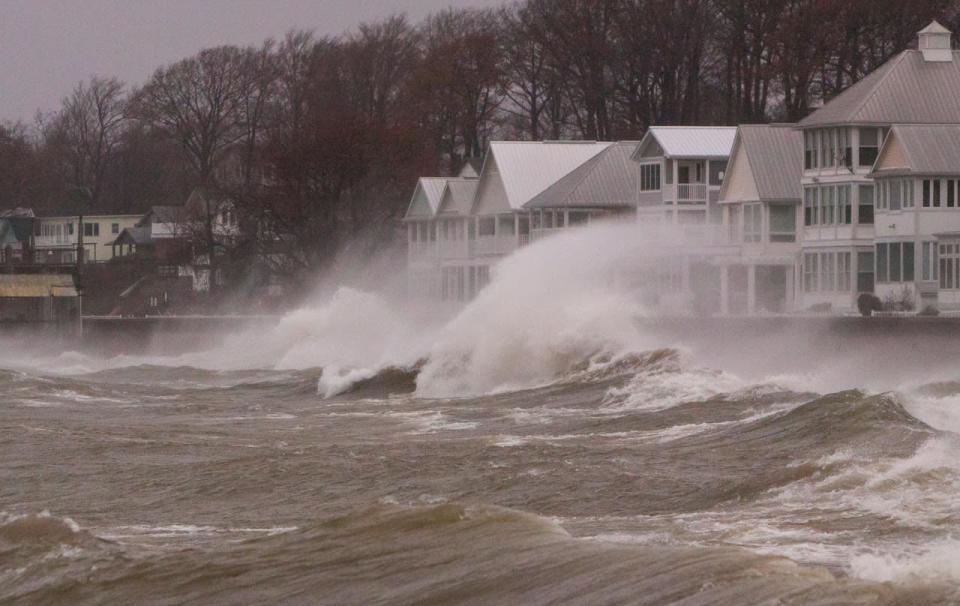
Owners, “whether it’s an individual, or an association, would be the party liable for the activities that take place on your property,” Redekop said. “In Fort Erie… we would have several hundred private property owners and they’re each responsible for the land that they own unless they’re part of an association. Those associations will all have liability insurance.”
Redekop said beachgoers should also be mindful of where they swim and whether they might be trespassing.
The municipality could mandate signage on private property, but Redekop said such a regulation would require public consultation and it hasn’t been brought forward to the municipality as “an issue that we should be addressing.”
‘This isn’t gonna end well’
According to U.S.-based Great Lakes Surf Rescue Project, between 2010 and September, 2023, there were 269 drownings in Lake Erie, however that number includes incidents on both Canadian and U.S. shores.
The highest number over the 14-year period — 36 drownings — was recorded in 2018. The group has recorded 14 drownings this year, of which two were off Ontario shores.
Dave Benjamin, executive director of the organization, said the non-profit group also teaches water safety, works with family and friends of drowning victims and provides training for lifeguards and first responders who may be responding to water emergencies.
Benjamin said winds across the Great Lakes can create “several types of dangerous currents” that can be very dangerous for swimmers or boaters.
Crystal Beach resident Nigel Hay says he had to call 911 in mid-August after witnessing a man on an inflatable being swept away by high winds. (Dean Weare/CBC)
Crystal Beach resident Nigel Hay knows first-hand how quickly danger can strike when people enter the water in less than ideal conditions.
Hay, 51, said he had to call 911 in mid-August after witnessing a man on an inflatable being swept away by high winds. He recorded the entire ordeal for his YouTube channel, which he said serves as an educational tool for beachgoers.
A few days earlier, Hay said he was at the beach when he saw three girls enter the water on paddle boards, just to the west of Crystal Beach Waterfront Park.
“I just thought to myself, this isn’t gonna end well,” Hay told CBC Hamilton. “It must have been like five minutes later they were like 200 metres away… The wind just pushed them straight down the lake really fast.”
While one girl was able to paddle back, the others needed help — and family members asked Hay to pitch in. He went out on his sea-doo and brought them back to shore, he said.
Hay said he’d also like to see more signage at the beach “to warn the people that come down here… As most of them are not from town, they don’t know the dangers or what lurks below the water here. When the weather changes very quickly, this becomes very dangerous,” he said, looking out over the waves, months later.
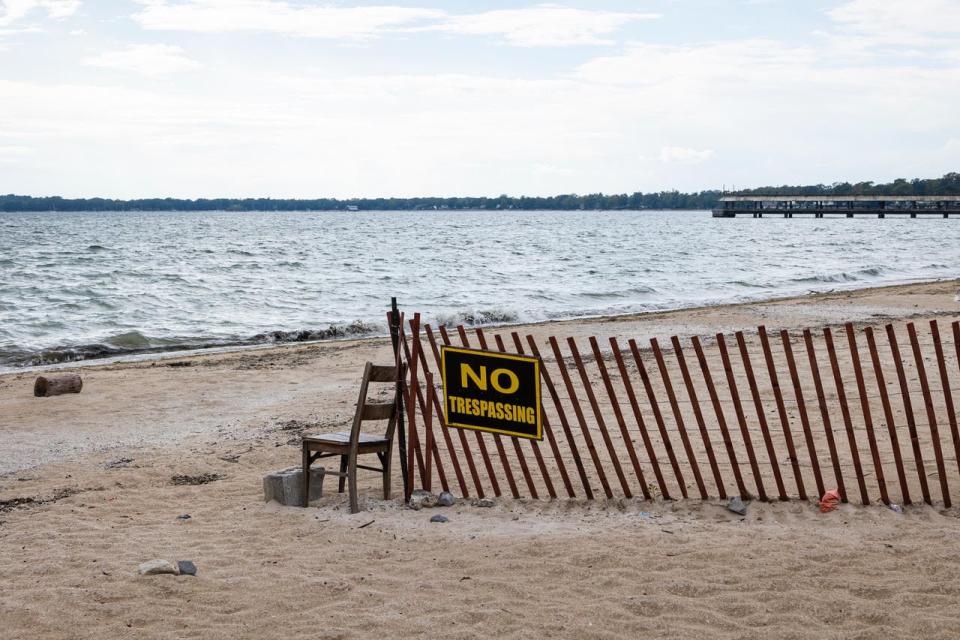
Recommendations for property owners
According to the Life Saving Society of Ontario, which puts out its own Ontario Waterfront Safety Standards, the province doesn’t have regulations for waterfront beaches. It does have regulations for public pools and recreational camps with waterfront areas, however.
Stephanie Backalar, a spokesperson for the society, said waterfront owners should refer to the organization’s manual to be properly prepared and equipped.
“It is our hope that these owners and operators will go above and beyond and do everything in their power to make Ontario waters as safe as possible — this includes posting of required signage and supplementary signage that may save a life,” Backalar said.
Backalar said less than one per cent of drownings occur in lifeguard supervised settings, so the organization recommends swimmers attend those beaches with lifeguards on duty. However, she said, the group doesn’t have an exact number for how many beaches in Ontario are staffed with lifeguards.
Redekop said costs and staff shortages make lifeguarding work difficult to implement. He says there also needs to be a greater investment in swimming lessons, especially in larger city centres where people are coming from in summer.
Whether private or public, Benjamin said there are commonly accepted water safety best practices that should be followed by all property owners who provide access to the water.
He said these include beach hazard signs, public rescue equipment, public education about the area, as well as 911 call boxes so that people can have immediate access to first responders if there’s an emergency.
Large waves can be seen near Crystal Beach in this file photo. Great Lakes Surf Rescue Project executive director Dave Benjamin says winds across the Great Lakes can create ‘several types of dangerous currents.’ (Dean Weare/CBC)
Benjamin also recommended lifeguards, life ring stations along the shoreline and signage with emergency protocols and about lake conditions.
“Absolutely, there should be beach hazard signage … strategically placed where the rip currents or dangerous currents may happen,” he said.
Benjamin said “none of this was available when [Keith] drowned, and now, many years later, it is still not available.”
*****
Credit belongs to : ca.news.yahoo.com
 Atin Ito First Filipino Community Newspaper in Ontario
Atin Ito First Filipino Community Newspaper in Ontario
